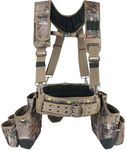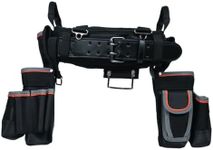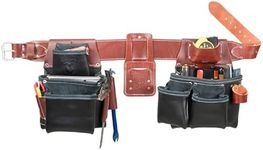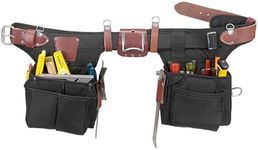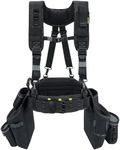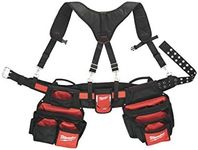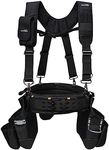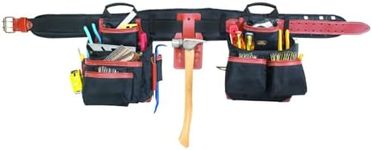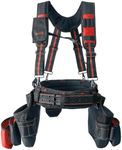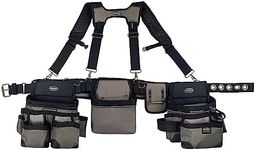Buying Guide for the Best Tool Belts
Choosing the right tool belt can make your work much more efficient and comfortable, whether you're a professional tradesperson or a DIY enthusiast. The best tool belt for you will depend on the type of work you do, how many tools you need to carry, and your personal comfort preferences. It's important to consider how the belt distributes weight, how easy it is to access your tools, and how durable the materials are. By understanding the key features, you can find a tool belt that keeps your tools organized and within easy reach, while also being comfortable to wear for long periods.MaterialThe material of a tool belt affects its durability, weight, and comfort. Common materials include leather, nylon, and polyester. Leather is very durable and can last for years, but it is heavier and may require some breaking in. Nylon and polyester are lighter and often more affordable, but may not be as long-lasting as leather. If you need a belt for heavy-duty, daily use, leather might be best. For lighter tasks or occasional use, nylon or polyester could be more comfortable and sufficient.
Number and Type of PocketsThe number and type of pockets determine how many tools and accessories you can carry and how organized you can be. Some tool belts have many small pockets for nails, screws, and small tools, while others have larger pouches for bigger items. If you use a wide variety of tools, look for a belt with multiple pockets of different sizes. If you only need a few essential tools, a simpler belt with fewer pockets may be more comfortable and less bulky.
Belt Adjustability and FitA tool belt should fit snugly and comfortably around your waist or hips. Adjustable belts allow you to customize the fit, which is important for comfort and safety. Some belts come in fixed sizes, while others have adjustable straps or buckles. If you plan to wear the belt over different types of clothing or share it with others, an adjustable belt is more versatile. Always try to ensure the belt fits well to avoid discomfort or slipping during use.
Weight Distribution and SupportHow a tool belt distributes weight can affect your comfort, especially during long periods of use. Some belts have padded straps or suspenders to help spread the weight across your shoulders and back, reducing strain on your hips. If you carry a lot of heavy tools, look for belts with extra support features. For lighter loads, a simple waist belt may be sufficient. Consider your typical workload and how much support you need to stay comfortable.
Closure TypeThe closure type refers to how the belt fastens around your body. Common closures include buckles, Velcro, and snap fasteners. Buckles are secure and durable, making them a good choice for heavy-duty use. Velcro is quick and easy to adjust but may wear out over time. Snap fasteners are convenient but may not be as strong as buckles. Choose a closure that feels secure and is easy for you to use, especially if you need to take the belt on and off frequently.
Modularity and CustomizationSome tool belts allow you to add or remove pouches and accessories, making them customizable for different tasks. This modularity is useful if your tool needs change from job to job. If you want flexibility, look for a belt with detachable pockets or loops. If you always use the same tools, a fixed design may be simpler and lighter. Think about whether you need to adapt your belt for different projects or if a standard setup will work for you.
